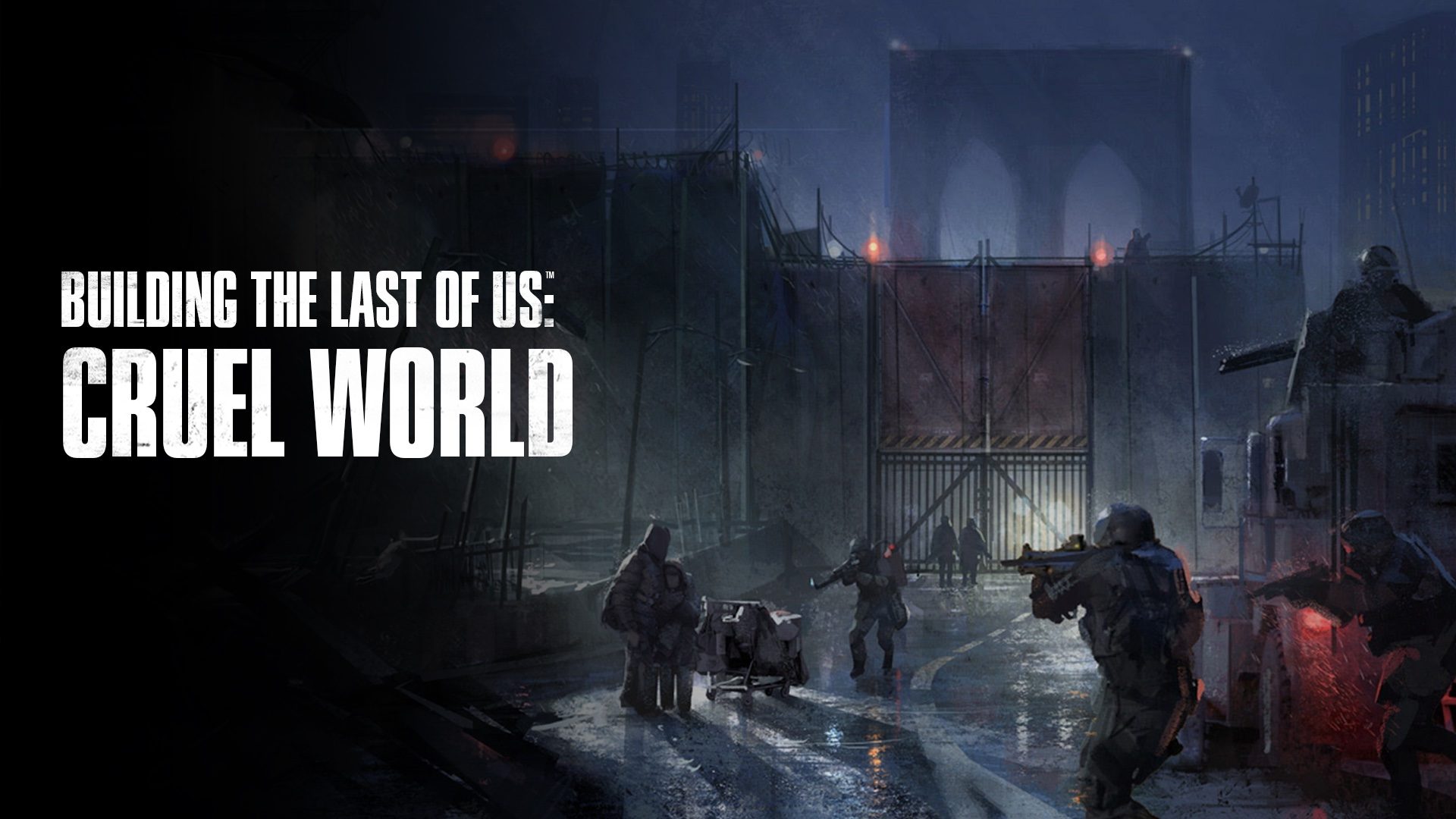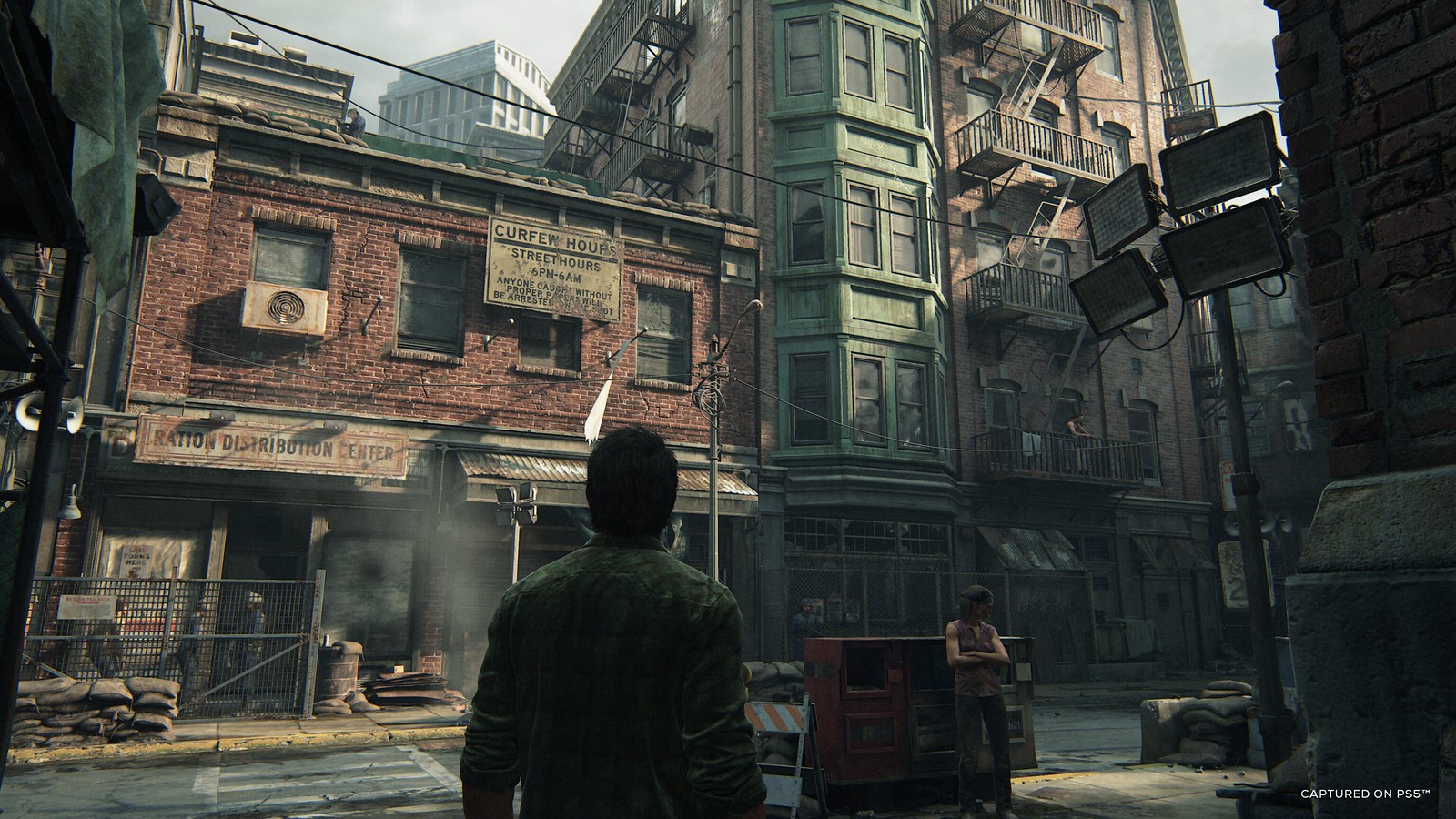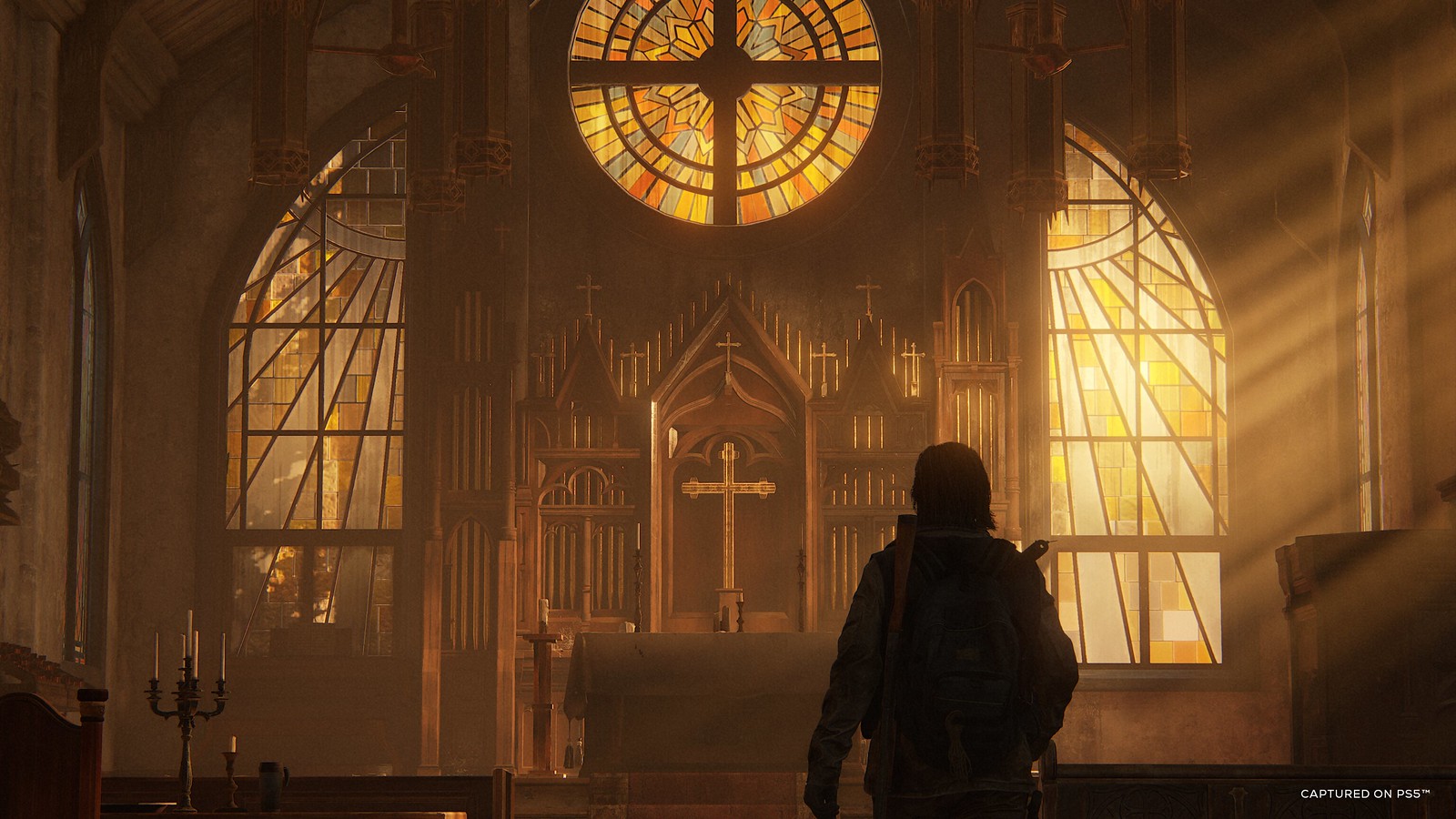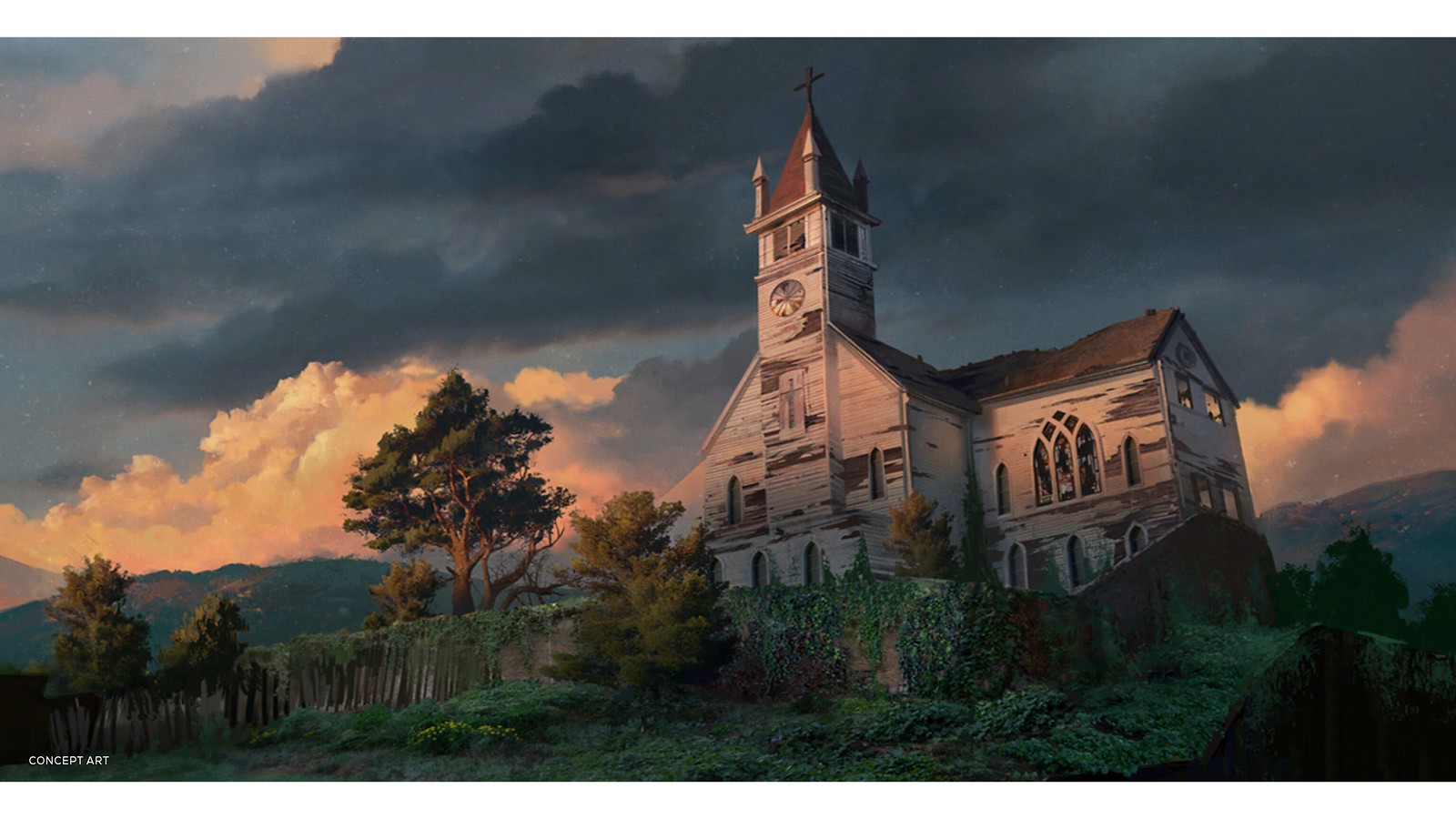Products You May Like
The Last of Us revolves around the story of Joel and Ellie, but their story is a constantly moving one. From one location to the next, the pair learns how many parts of the United States have weathered the Cordyceps outbreak while coming into contact with survivors and their encampments, from those squatting in the ruins of major cities while others have built up new communities in suburban areas or even out in nature.
The world they, and players, explore can be a cruel and unforgiving one, but also a world filled with beauty and light amidst the struggle for survival. Players are met with two distinct but clear examples of how life has transformed in this post-pandemic world early in the adventure of The Last of Us Part I – the Boston Quarantine Zone and Bill’s Town. The dichotomy of these locations demonstrates the human and natural threats around every corner, as well as the bright spots of humanity struggling to survive in this world. With both locations recently featured on The Last of Us on HBO, as well as recently remade in The Last of Us Part I on PlayStation 5 console and available March 28 on PC via Steam and the Epic Games Store, let’s dive into what makes these locations so essential to Joel and Ellie’s journey, and how the HBO adaptation tackled Joel and Ellie’s viewpoint of the world around them.

Cruel world
On the note of viewpoint, when playing The Last of Us, despite wherever the adventure takes you or the characters you meet, the team endeavored to tell this story quite specifically.
“We gave ourselves this rule when we were making it, everything is either seen through Joel’s perspective or Ellie’s perspective, and that’s it, because we want you to spend a lot of time with them moving from space to space in real time and becoming them,” Naughty Dog Co-President Neil Druckmann said.
That perspective feeds into how players are introduced to and informed of The Last of Us’ world and characters. That’s not only true of how The Last of Us’ unforgettable opening communicates its emotional stakes, but also in how players are introduced to the post-outbreak landscape via Joel’s time in the Boston Quarantine Zone, a heavily militarized community overseen by FEDRA, where civilians are just trying to eek by in a harsh world.
“In The Last of Us, when nature takes over society again, we tried to bring out the beauty of natural lighting, and the tone and atmosphere of that,” Naughty Dog Art Director Erick Pangilinan said. “When we show the QZ, we take out all the plants. We take out all the natural life. You won’t see a lot of trees in the QZ, you won’t see a lot of grass. Everything is very sterile, everything is man-made, and you can see the misery of what’s happening in the QZ.”
“It’s very oppressive in the Boston QZ, and we want to express that right away with everything you see. As soon as you walk out onto the street, you see men with guns, fences up everywhere keeping you from walking anywhere other than where the government wants you to be,” Lead Cinematic Animator Bryant Wilson said.
The Naughty Dog team, both originally for The Last of Us’ debut in 2013, and for The Last of Us Part I remake, had to consider how first impressions could immediately communicate the tone and mood of the Boston QZ, and by proxy the way of life so many survivors were facing.
“That first street [in the QZ] does a lot of work creating that world they’re in. The people who are pulled out of their homes, and they’re being forced to take an infected test. When you play through that, you’re given the option to sit and watch it or just walk on by, and it’s not something that we force you to look at, and that’s on purpose,” Wilson said. “It’s a reality of this world.”
“The QZ is man trying to control other people, and how to maintain control over the world and over nature,” Pangilinan said. “A lot of the materials in the QZ are very angular and hard. We like to create that tension of how this oppressive organization is controlling day-to-day life.”
Evoking the tone of this portion of the world, and the difficult realities survivors face under the thumb of FEDRA, is conveyed through every artistic choice, every animation and moment the development team produces to bring the post-pandemic world to life.
“The lighting in that area is very bluish and very overcast. We like to create this atmosphere like you’re in a prison… in the QZ, the people are very frustrated. We wanted to bring out their frustration, their hopelessness,” Pangilinan said. “And you can also see this in the marketplace where, when we tried to design it, we wanted to make sure that the place felt very desperate, very scarce, and people are selling rats and scrap metal because this is what they’ve got, and they’re trading things just to get by.”
The Boston QZ serves an important function in the context of The Last of Us’ story as the players’ introduction to the state of the world in this new era. When considering how to both preserve and refine that experience for The Last of Us Part I, the development team endeavored to bring the world to life with richer detail, but not for the sake of simply adding more.
“The first thing we always do is ask, ‘What was the original intent of this scene,’” like, for example, the QZ marketplace. It’s so easy to just clutter that with goods,” Pangilinan said. “But, in fact, the goal of that scene was to show the scarcity of living in the QZ and how desperate people were. It was important to show what they were eating or what they were selling, and how the whole thing is set up, where everything is just made to pack up and run once they get caught.”
A refinement and improvement of details, rather than a surplus of new ones, helped guide the team in ensuring the remake maintained the tone and emotional honesty of Part I’s original story.
“If there’s any animation that could be improved upon we would, but we didn’t want to add too much to it, mainly because we don’t want to ruin the feeling of the original,” Wilson explained. “Every animation in that sequence has been retouched, redone, reworked and improved, even in ways that may not be noticeable right away.”
HBO’s The Last of Us introduced viewers to the Boston QZ in its premiere, and, as Executive Producer Druckmann explained, offered one of the many opportunities to showcase TLOU’s world from multiple vantage points.
“With the show…we had this opportunity to unplug from our main characters and plug into these other characters,” he said. “You get to see Marlene talking with this new character, Kim, and we get to flesh [Marlene] out some more and see how she deals with the situation of being the leader of the Fireflies in a way that we didn’t get to see in the game. We heard about it offhandedly, but now we get to see the drama of what this character is wrestling with and the push and pull she’s feeling between different parts of her duty.”
“One of my favorite things was being able to walk out certain things about her life and her experiences that were only locked in my imagination,” Merle Dandridge, who plays Marlene both in the game and show, explained. “Obviously, we’d had a ton of conversations, we had imagined, dreamed and thought about who she was and where she had been. But some of these things that the audience is going to get to see are fresh to them in some ways butt still steeped in the truth of who she is and where she came from.”
Even with familiar locations like Marlene and the QZ, the HBO series finds new ground to examine the world of The Last of Us through a new lens. And that idea is particularly true of another environment game fans will be familiar with.
Beauty in the danger
Compared to the sharp-edged buildings, nature-less city streets, and gloomy palette of the QZ, Bill’s Town as seen in The Last of Us Part I is a breath of fresh air, albeit one with danger still lurking in the brush. An abandoned Massachusetts town, the titular Bill has, essentially, created an intricate maze of traps and alarms to keep himself safe in an area largely devoid of human life, but filled with the potential danger of the Infected.
But even with that looming threat, Bill’s Town is an opportunity for players to see the world of The Last of Us come alive – beautiful natural light drenches abandoned homes overgrown with natural flora.
“This is the world that one guy has been curating, and it gives the player a little bit of time to breathe, to look at this beautiful area,” Wilson explained. “This is what freedom looks like now. It’s dangerous, but it has this beauty to it, where the natural world has come back and overtaken it.”
“Bill’s Town has its own isolationist feeling, it’s a person’s castle and it’s his domain. He controls what he lets in and out. And nature is one of those things that can go in and out of it. So we wanted to create Bill’s Town in a warm setting, with the sunset shining through nature and the buildings,” Pangilinan said. “It creates this different aesthetic to contrast where you just came from, the tunnels and the sewer, which is very dark and dangerous.”
But just like with any decision about the artistic ambitions for a given portion of The Last of Us, the world around the player reflects back on the story and characters at the heart of it.
“In Bill’s Town, he lets nature takes it course, but he also has built this into his sort of small QZ. And we wanted to create this mixture of how nature and man balances out,” Pangilinan said. “But Bill’s Town is also representative of Joel. It’s representative of his psyche and his isolationist and paranoid side of his personality. That’s why we represent it with, with walls, with traps, a lot of things that trigger and, and fights back and pushes back so that they can be on their own.
Of course, as those who have watched The Last of Us on HBO’s third episode will know, Bill’s Town is still depicted, in essence, as Bill’s personal fortress, but the way viewers experience it is quite different from the game. Rather than via Joel and Ellie’s perspective, the show flashes back to let us watch Bill (Nick Offerman) and Frank (Murray Bartlett) fall in love and live out their lives. It changes the experience of how fans learn of this corner of the world, but it retains the characters and pathos in a format that better suits its new medium.
“Bill’s Town is an interesting one because that section was great in the game, but it’s very much a great encounter. You go to this interesting place that is an environmental change from the QZ that you’re in. It’s a small Massachusetts town. You meet a guy who’s funny and cranky and weird, and then there’s gameplay,” Executive Producer Craig Mazin explained of the shift in direction for the show.
“There’s a philosophical argument between these two characters of Bill and Frank that was touched on in the game and is really expanded on in the show, which is, yes, you could survive but to what end,” Druckmann said. “That’s where these two philosophies are presented, where Bill’s position is, ‘That is the end. The end is survival.’ And then Frank is like, ‘No, there’s more to life than this.’ In the game, they have a falling out, and Frank leaves. And in [Craig’s and my] conversations, we thought it could be interesting to show the opposite of that in the show.”
“I thought there’s another way of thinking about this [section of the game and its message], which is that Joel and Ellie are two people that love in different ways,” Mazin explained. “And there’s a good argument to be made that you need both kinds of people, people who love outwardly and then people whose love is protective, both of which can get you into trouble, and that there was an interesting opportunity to just expand the Bill and Frank storyline to tell a story that we didn’t see [in the game].”
The depictions of this portion of The Last of Us diverge, giving fans of the game something entirely new to experience in the episode, while those introduced to Bill and Frank in the show can come to understand their corner of the world in a different way by playing the game. But they’re all rooted in the same desire to bring forth these memorable characters, what their stories mean, and how these relationships impact their lives. And it’s an alternative take that Druckmann welcomed when Mazin presented it, especially as it allowed the show to showcase more perspectives of the world beyond Joel and Ellie while still reverberating through to their story.
“I was terrified when I sent it to Neil because… talk about wandering off the path, and he loved it. I mean he was just like, ‘This is my favorite one so far,’” Mazin said. “Which is a testament to… how much space he created for me to play around and think of some new things.”
“The tragedy of that episode is the note that Bill leaves Joel, which is to say, ‘This is your job. This is what you have to do with Tess,’ and Joel gets that message too late, and that’s when that shift happens,” Druckmann said. He’s like, ‘Well, it was too late for Tess. Maybe it’s not too late for this kid,’ and that’s the mental shift he makes at the end of that episode. Without saying it, that whole Bill and Frank episode reflects back onto them and makes you understand this significant choice that Joel is making at that point.”
And for Druckmann, it was all about adapting the story the Naughty Dog team had worked on in a way that best fit its new medium. In doing so, he hopes it’s an experience that can impact playing The Last of Us for those who have watched it.
“There’s no core [gameplay] loops in a TV show other than viewers sit there, watch and enjoy it. But the drama has to be elevated because of that,” Druckmann explained. So, that allowed us to, in some ways, enrich the world and the characters, and I’ve now heard from a couple of people that have watched the whole show and went back to play the game, and they said the game feels richer now having watched the show.”And whether you’ve already begun to, or are planning to jump back into the game, The Last of Us Part I is now available on PS5, and available for pre-purchase for PC via Steam and the Epic Games Store for release on March 28. For more on The Last of Us and its adaptation to TV, be sure to check out our deep-dive into The Last of Us’ unforgettable opening, and a breakdown of how Naughty Dog brought The Last of Us’ Clickers to life.








